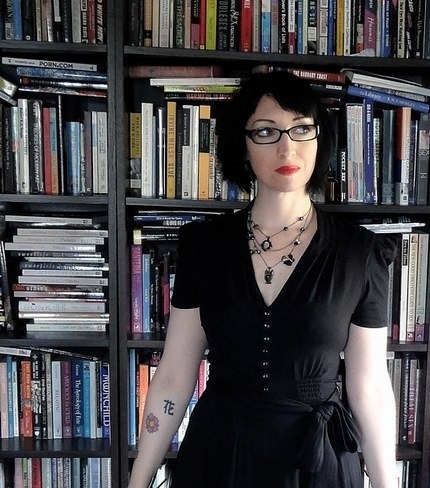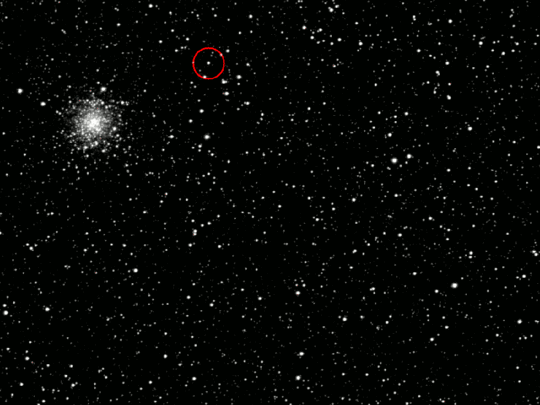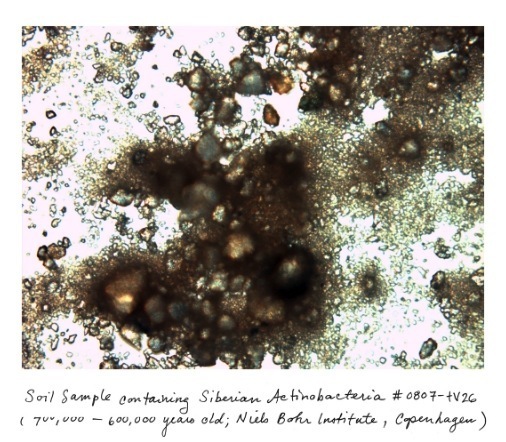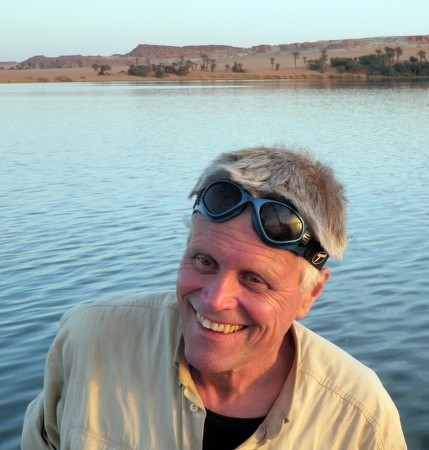Stewart Brand's Blog, page 53
June 17, 2014
Stefan Kroepelin Seminar Media
 This lecture was presented as part of The Long Now Foundation’s monthly Seminars About Long-term Thinking.
This lecture was presented as part of The Long Now Foundation’s monthly Seminars About Long-term Thinking.
Civilization’s Mysterious Desert Cradle: Rediscovering the Deep Sahara
Tuesday June 10, 02014 – San Francisco
Audio is up on the Kroepelin Seminar page, or you can subscribe to our podcast.
*********************
The Sahara and civilization – a summary by Stewart Brand
“Almost everything breaks in the desert,” Kröpelin began. He showed trucks mired in sand, one vehicle blown up by a land mine, and a Unimog with an impossibly, hopelessly broken axle. (Using the attached backhoe, it hunched its way 50 miles back to civilization.)
The eastern Sahara remains one of the least explored places on Earth, and it is full of wonders. Every year for 40 years Kröpelin has made multi-month expeditions to figure out the paleoclimatological changes and human saga in the region over the last 17,000 years. There are no guides, no roads. When you find something—astonishing rock art (there are thousands of sites), an amazing geological feature—you know you’re the first human to see it in thousands of years.
A great river, 7 miles wide, 650 miles long, once flowed into the Nile from the desert. Now called Wadi Howar, its rich, still unstudied archeological sites show it used to be a thoroughfare from the deep desert. A vast spectacular plateau called the Ennedi Highlands, as big as Switzerland, has exquisite rock art detailing pastoral herds of cattle and even dress and hair styles. Mouflon (wild sheep) and crocodiles still survive there.
Most remarkable of all are the remote Ounianga Lakes, some of them kept charged with ancient deep-aquifer fresh water because of the draw of intense evaporation from the hypersaline central Lake Yoa. In 1999 Kröpelin began a stratigraphic study of the lake’s sediment, eventually collecting a treasure for climate study—a 52-foot core sample which shows every season for the last 11,000 years.
For Kröpelin, many strands of evidence spell out the sequence of events in the eastern Sahara. From 17,000 to 10,500 BP (before the present), there were no human settlements along the Nile. But the Sahara was gradually getting wetter in the period 10,500 to 9,000 BP, and people moved in from the south. The peak of the African Humid Period, when the Sahara was green and widely occupied, was 9,000 to 7,300 years ago. Then a gradual desiccation from 7,300 to 5,500 BP drove people to the Nile, and the first farms appeared there. From 5,500 BP on, the Nile’s pharaonic civilization got going and lasted 3,000 years.
Unique artifacts such black-rimmed pots and asymmetric stone knives, once used in the far desert, turn up in the settlements that created Egypt. Kröpelin concluded: “Egypt was a gift of the Nile, but it was also a gift of the desert.”
And of climate change.
Subscribe to our Seminar email list for updates and summaries.

June 16, 2014
Science Fiction to Science Fabrication Talk at The Interval July 1, 02014
Tickets are on sale for Science Fiction to Science Fabrication July 1, 02014 at The Interval
Artist/maker/hacker Dan Novy (Novysan) is an Emmy award-winning transmedia storyteller with a background in theater, , and a research/PHD-candidate position at the MIT Media Lab. Last fall he and his colleague Sophia Bruckner taught Science Fiction to Science Fabrication (aka “Pulp to Prototype”) at the Lab; their students read classic and contemporary science fiction and then built prototypes based on the worlds they’d read about.
The authors they read included J. G. Ballard, Arthur C. Clarke, Warren Ellis, Daniel Suarez and William Gibson. The point was that the fantastic future worlds of speculative fiction are often essential precursors to real world technology. Novy’s own work in Immersive Display technologies and Non-Invasive Narrative Neurostimulation has drawn inspiration directly from the works of Neal Stephenson and Ray Bradbury. He’ll tell us more about the class and share some thoughts about the Manual for Civilization as well.
This event is part of a new series of salon talks at The Interval. Next up in the series is Violet Blue on Tuesday, June 17 discussing long-term online privacy models and her latest book The Smart Girl’s Guide to Privacy. Tickets are still available.

The Interval at Long Now is Long Now’s new home which is now open seven-days-a-week. A cafe and museum by day and with a cocktail, beer, and wine menu after 5pm, The Interval features art designed by Brian Eno and artifacts from our 10,000-year Clock. Several Tuesday nights a month The Interval hosts salon events.

June 9, 2014
The Interval at Long Now Opens June 15th and TheInterval.org is live
After years of planning and a full year under construction, we are proud to announce our new venue The Interval at Long Now opens its doors to the public this Sunday, June 15th 02014. Come visit us soon. We’ll be open daily from 10AM to midnight at our location in historic Fort Mason Center on San Francisco’s north shore.
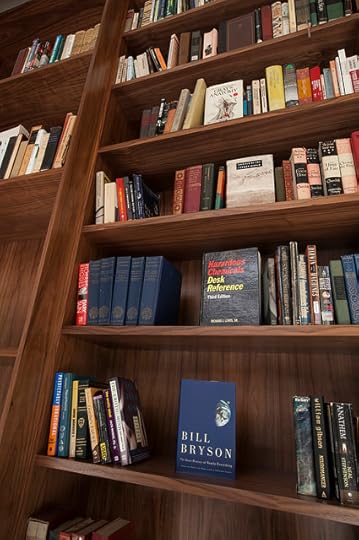
Photo by Because We Can
The Interval is full of artifacts of Long Now’s projects including the 10,000-year Clock and Rosetta Project. We serve fine tea from Samovar Tea Lounge and Sightglass coffee during the day. At night our drink menu designed by Jennifer Colliau is inspired by time and the history of the cocktail.
We’re also proud to feature an ambient painting and sound designed by Brian Eno who is one of the co-founders of Long Now. Our ever-growing Manual for Civilization now includes more than a thousand books on floor-to-ceiling shelves throughout the space. And more are being added as we acquire them with the help of our partners at Borderlands Books and Friends of the San Francisco Public Library.
We’ve launched TheInterval.org with more details about our new venue including the lineup of upcoming salon talks and other ticketed events. Next up is a special pre-opening talk by Rachel Sussman about her book The Oldest Living Things in the World this Friday. Talks will typically be on Tuesday nights and we recommend purchasing tickets in advance.
We’ve given you a virtual tour of our new bar, cafe, and event venue earlier, but here are more recent photos from pre-opening events at The Interval. It looks even better with people in it.
photos by William McLeod (unless otherwise noted)
As we open we are also completing the crowdfunded ‘brickstarter’ to support the costs of this renovation. Donations are tax-deductible and help us complete the final details of The Interval including acquiring all the books for the Manual for Civilization library.
Please consider a donation–we have many gifts to thank you for your generosity including Challenge Coins, Long Now flasks, and specially hand-crafted gin and whiskey from St George Spirits.

June 8, 2014
Violet Blue Talks Privacy at The Interval: June 17, 02014
Next up in Long Now’s newly launched series of salon talks is author/blogger Violet Blue who will use her latest book The Smart Girl’s Guide to Privacy as a starting point to talk about tech, gender and long-term sustainable privacy models on Tuesday, June 17 at The Interval, our new public space at Fort Mason Center in San Francisco.
The Smart Girl’s Guide to Privacy is a guidebook for how to keep your online personal life under your own control with advice for reducing vulnerability to identity theft, being smarter about social media, and how to keep from being hacked. Plus what to do if you are hacked (or worse). It covers fundamental and advanced privacy topics with a focus on the privacy needs of women. It has been recommended by the Electronic Frontier Foundation.
Written in plain, user-friendly language and covering everything from revenge porn to identity theft to online dating, The Smart Girl’s Guide to Privacy is specifically geared toward women and other vulnerable members of the online population, who need guidance navigating the murky, often treacherous waters of the Internet.
— The Daily Dot
The beauty of Blue’s book is that its useful for readers with varying levels of online privacy knowledge. It doesn’t gloss over the small stuff, like why giving out your name and phone number poses a threat, yet it speaks to more complex issues, like navigating the legal system and the internet when you need photos taken down from a site. The result is an engaging, timely, and instructive read that gets women up to speed on the privacy measure they need to take.
— Online Privacy Blog, from Abine.com

Violet Blue writes for ZDNet, CNET, and CBSNews (previously Oprah Magazine, MacLife, SF Appeal and the San Francisco Chronicle). She has written 40+ books and her sexuality blog TinyNibbles is awarded, infamous, and Not Safe For most Works. She took part in Long Now’s Long Conversation in 02010 and recommended books for the Manual for Civilization.
Interval donors hear about our events first: there’s still time to become a charter donor.

June 6, 2014
ESA’s Rosetta Probe begins approach of comet 67P
The European Space Agency’s Rosetta probe has sent some great images back to Earth illustrating its approach as it has pulls to within 2 million kilometers of 67P/Churyumov-Gerasimenko the comet it is targeting. Later this year it will drop a lander on the comet to conduct important experiments on its composition–more on that below.
During development of the mission the ESA invited Long Now to include one of our Rosetta Disks on the probe. And so this ESA mission is not only the most detailed comet researcher ever, it is also the first off-world archive of thousands of human languages.
The Rosetta Project is Long Now’s effort to do very long-term archiving of human languages. The disk including parallel texts (inspired by the original Rosetta Stone) and other information documenting thousands of languages. The Rosetta disk on the probe is an early prototype, a more recent design is below:
The Rosetta space probe had been in hibernation since 02011, having completed several flybys and slingshot maneuvers after being launched in 02004. San Francisco’s Exploratorium marked the ESA’s successful re-awakening of the probe in January and continues to follow its journey. Last month Exploratorium Senior Scientist Paul Doherty spoke with Rosetta Project Scientist Claudia Alexander about recent developments and what scientists hope to learn from this up-close look at a comet.
Comets generally have very eccentric orbits, meaning they travel in very squished ellipses, rather than perfectly round circles. That eccentricity causes the comets to oscillate between the outer reaches of the solar system and relatively close passes by the Sun. Comet 67P is on its way in toward the Sun right now and that means it’s heating up. This causes ice to melt and boil and eject gas and dust from the comet’s nucleus, creating the characteristic comet tail. The Rosetta mission will orbit 67P for 17 months, through its closest approach to the Sun and then out again. This will provide an unprecedented level of detailed data as the comet goes through the significant changes caused by drastic changes in temperature.
After 17 months of orbit and study from above, the plan is for Rosetta’s Philae lander to drop onto the comet itself in November. It will drill into the surface of the comet and perform experiments to learn more than ever before what composes a comet. And you can follow its progress on Twitter.
Introducing @RosettaSD2 : My sampling, drilling and distribution instrument http://t.co/p3uz9h7Zcn #Rosetta pic.twitter.com/MvCpg0Hgcc
— Philae Lander (@Philae2014) April 9, 2014

June 5, 2014
Sylvia Earle & Tierney Thys Seminar Media
This lecture was presented as part of The Long Now Foundation’s monthly Seminars About Long-term Thinking.
Oceanic
Tuesday May 20, 02014 – San Francisco
Video is up on the Sylvia Earle & Tierney Thys Seminar page.
*********************
Audio is up on the Sylvia Earle & Tierney Thys Seminar page, or you can subscribe to our podcast.
*********************
Oceans alive – a summary by Stewart Brand
Neither of them eats fish.
Both marine biologists applaud the improved regulation of American fishing and the resulting recovery of important fisheries, but they note that 90% of our seafood is imported, and one-third of that is caught illegally. Two-thirds of global fisheries are overfished. Eating a tuna, Earle points out, is like eating a wolf or a tiger. It is a magnificent predator often decades in age. We no longer commercially harvest wildlife on land. Why do we do it in the sea?
Noting that 15% of land has become protected in the last 100 years, the speakers said we have just started on protecting the ocean. About 3% is now protected, in 8,000 Marine Protected Areas. The goal is 20% by 2020. One hero of the movement is Palau’s president Tommy Remengesau, who this year declared that commercial fishing would be banned in its entire ocean economic zone—230,000 square miles. Likewise New Caledonia just created a 500,000 square mile “Natural Park of the Coral Sea.”
Ocean science keeps yielding profound discoveries. A sea-going photosynthetic bacteria named Prochlorococcus was identified as recently as 1986, yet it may be the most abundant photosynthetic species on Earth, responsible for 5-10% of all the oxygen in the atmosphere. Without their ancestors we wouldn’t exist. Deep-diving Earle noted that daylight only reaches about 1,000 feet down in the ocean. Most of the world’s life therefore lives in total darkness, and “bioluminescence is the most common form of communication on Earth.”
Thys observed that the greatest need is for coordinated, consistent remote-sensing in the ocean, and that is increasingly being provided by small robots that travel on their own on and under the surface, sending their data to satellites as well as cabled observatories. Small satellites also are multiplying, providing daily, detailed information from above. Citizen science is growing along with the Maker movement.
“Life came from the ocean,” Thys concluded. “And the life in it continues to nurture life everywhere. We owe the ocean some nurture back.”
Subscribe to our Seminar email list for updates and summaries.

June 4, 2014
Multi-Millennial Portraits: The Deep Time Photography and Writing of Rachel Sussman
The oldest living things in the world are a record and celebration of the past, a call to action in the present, and a barometer of our future, writes artist and SALT speaker Rachel Sussman in The Oldest Living Things in the World.
When Rachel spoke for Long Now in 02010 her book on organisms that have lived 2 millennia or more was only partially complete. Four years later The Oldest Living Things in the World is published and on the New York Times Best Seller list.
And as we prepare to welcome her back to San Francisco this month, we thought we’d take a closer look and a deeper read of this remarkable book.
Over the past decade, Sussman has been searching the planet to photograph continuously living organisms that are 2,000 years or older. She begins at year “0” and travels backwards from there, capturing millennia of living past in a fraction of a second. She writes in her book:
These ancient survivors have weathered the millennia on every continent, in some of the world’s most extreme environments, enduring ice ages, geologic shifts, and humans’ spread across the planet. Many are so small that you could walk right over them, none the wiser. Others are so large that you can’t help but stand in awe before them. I’ve photographed thirty different species, ranging from lichens in Greenland that grow only one centimeter every hundred years, to unique desert shrubs in Africa and South America, a predatory fungus in Oregon, brain coral in the Caribbean and an 80,000-year-old colony of aspen in Utah. I journeyed to Antarctica for 5,500-year-old moss, and to Tasmania for a 43,600-year-old clonal shrub that is the last individual of its kind, rendering it simultaneously critically endangered and theoretically immortal.
Sussman’s project also explains what it means to be in the year 02014 and the temporal tension that comes with photographing Deep Time. She uses the analogy of being in deep water–just like deep water, it is a battle to stay in Deep Time:
“It’s difficult to stay in Deep Time – we are constantly drawn back to the surface. This vast timescale is held in tension with the shallow time inherent to photography. What does it mean to capture a multi-millennial lifespan in 1/60th of a second? Or for that matter, to be an organism in my 30s bearing witness to organisms that precede human history and will hopefully survive us well into future generations?”
 This 5,500-year-old moss bank lives right around the corner from where the Shackleton Expedition was marooned 100 years ago on Elephant Island, Antarctica. It was a victory simply being able to locate it. These days it’s easier to get to Antarctica from space. (Rachel Sussman via Time)
This 5,500-year-old moss bank lives right around the corner from where the Shackleton Expedition was marooned 100 years ago on Elephant Island, Antarctica. It was a victory simply being able to locate it. These days it’s easier to get to Antarctica from space. (Rachel Sussman via Time)
She has long been interested in the relationship between humanity and nature and expressed that through making landscapes. Contrary to what the book title may suggest, Sussman does not look at her subjects as “things” but over time came to see them as individuals. Instead of focusing on the aesthetics or the composition of landscape photography, she found herself creating portraits of these individuals. Her task became to capture their essence and spirit in order to better connect with them and through them to connect with Deep Time:
I approach my subjects as individuals of whom I’m making portraits. There’s a way to anthropomorphize the experience of these ancient organisms that have bore witness to millennia, which is something that is so outside of our human understanding of what a life span is–it is so outside of our temporal comfort zone.
 This 9,950-year-old tree is like a portrait of climate change. The mass of branches near the ground grew the same way for roughly 9,500 years, but the new, spindly trunk in the center is only 50 or so years old, caused by warming at the top of this mountain plateau in Western Sweden. (Rachel Sussman via Time)
This 9,950-year-old tree is like a portrait of climate change. The mass of branches near the ground grew the same way for roughly 9,500 years, but the new, spindly trunk in the center is only 50 or so years old, caused by warming at the top of this mountain plateau in Western Sweden. (Rachel Sussman via Time)
The end result of Sussman’s 10-year project is an archive; one that is part art and part science. Her book contains 120+ photos of the thirty subjects. Accompanying the photographs, Sussman writes of her personal journeys searching for these ancient organisms with insights from scientists who research each of them. Her essays weave together scientific explanations with artistic portraits, and invite the reader to understand and partake in her experience. The multiple layers of her work interconnect to help conceptualize the experience of being alive for thousands of years.
 Lichens in Greenland that grow only one centimeter every hundred years.
Lichens in Greenland that grow only one centimeter every hundred years.
Sussman writes about her experience photographing The Senator, a now-deceased Bald Cypress whose 3,500-year life was ended by a man-caused fire. In another adventure she had overcome her fear of deep water and learn to scuba dive (while injured) in order to photograph the 2,000-year-old Brain Coral, the first member of the animal kingdom she encountered to surpass the two-thousand year mark.
The Siberian Actinobacteria (pictured above) is believed to be the oldest continuously living thing, dating somewhere between 400,000 and 600,000 years old. It lives underground in the permafrost where the colony was found by planetary biologists who were looking for clues to life on other planets by investigating one of the most inhospitable places on Earth.
Over the course of their investigation, they found that these remarkable bacteria are actually doing DNA repair at temperatures below freezing, meaning that they are not dormant; they have been alive and slowly growing for half a million years.
This puts the life of a 5,000-year-old Bristlecone Pine into perspective, which is also featured in her book as the “oldest unitarian organisms.”

Sussman’s approach evolved as her work spanned multiple years, disciplines, continents and personal struggles.
I don’t think it would be the same if I had just used a checklist and went around the world and was done in a year. There is something about over the years wanting to do justice to this work. I realized I needed to keep myself in the story and to be vulnerable. It’s not an overly personal story but just that I’m a character in it. People need to have an entry point where they can connect. That’s really the point of looking at these organisms as individuals. But also the window is partially being pulled open by me as a person who is trying to communicate something that I’ve experienced, or learned, or some philosophical musing, or just how hard it was. I think it’s a way to remind people that nature and this idea of Deep Time are not so distant from our everyday lives. All of these things are intertwined and you bounce back and forth between the here-and-now and long-term thinking. The longer I’ve spent thinking about Deep Time and these old organisms, I find it now easier to connect with that.
 Artist Rachel Sussman (photo by Victor G. Jeffreys II)
Artist Rachel Sussman (photo by Victor G. Jeffreys II)
Long Now is proud to bring Rachel back to San Francisco for two very special events: on June 12th, 02014 with fellow photographer Mario Del Curto discussing photography and the natural world at swissnex. And then on June 13th Rachel appears at The Interval, Long Now’s new venue at Fort Mason, to talk about the book and her experience creating it.
We hope you’ll join us for one or both of these opportunities to see Rachel Sussman in person and hear more about her remarkable work.

June 2, 2014
Stefan Kroepelin Seminar Primer
Anything as vast and mysterious as the Sahara Desert is bound to invite myth and legend – it’s how we make sense of things too large, elusive or forbidding to know firsthand. Stefan Kroepelin, however, has dedicated his life to firsthand knowledge of the Sahara, and has dispelled some myths along the way. He’s come to know, better than almost any outsider, the desert’s eastern portion, made up of Libya, Egypt, Chad and Sudan.
Kroepelin is a geologist and archaeologist who has studied the interplay of human settlement and the Sahara’s changing climatic characteristics over the last 10,000 years. He’s encountered a fair share of difficult conditions and frightening surprises in the desolate, harsh and sometimes lawless expanses of the Sahara. But as Nature put it,
those decades of difficult field work have paid off for Kroepelin, who has made seminal discoveries about the climatic history of the Sahara that are challenging assumptions about the tipping points the world may face in a warmer future. – Nature
The story that Kroepelin has helped piece together opens on a Saharan region vastly different from the one we know today.
10,000 years ago, the Sahara was significantly wetter than it is now, a lush savannah that supported life and hints of early civilization where sand and little else can now be found.
That little else has been the key to Kroepelin’s success, though. He and his team took core samples from the bottom of a lake in Chad and, by analysing the layers of sediment that had built up over the last few millennia – and the pollen contained therein – were able to draw the clearst picture yet of the region’s dessication and dessertification.
Previous attempts to describe this transition were similarly based on core samples, but these were taken from the Atlantic Ocean rather than the Eastern Sahara itself. Where the story told by these samples described a precipitous change, Kroepelin had already established that human settlements in the region didn’t appear to have been abandoned quite so quickly, or as he put it on Science Friday in 02008,
We were using man as a very sensitive climate indicator.
His new core sample squared with the picture of a more gradual shift and upended the previous research. The people displaced by the region’s drying out made their way east and found the water they needed at the banks of the Nile. There they developed one of the longest-lasting civilizations known to history.
Dr. Stefan Kroepelin shares tales of desert adventures – some likely his own – at the SFJAZZ Center on Tuesday June 10th, 02014.

May 30, 2014
Rachel Sussman in San Francisco: The Oldest Living Things in the World
Rachel Sussman spoke in our Seminars About Long-term Thinking (SALT) series in 02010 when she was about halfway into her project to document the world’s oldest living things. She traveled the world to learn about and photograph organisms that have lived 2000 years or more. This year she published her book The Oldest Living Things in the World and it is now on the New York Times Best Seller list.
June 02014 Long Now welcomes Rachel back to San Francisco for two very special events.
June 12th, 02014 come see Rachel and fellow photographer Mario Del Curto with Corey Keller (SFMOMA) discussing photography and the natural world: Nature as Image. Long Now is proud to partner to bring this event to swissnex in downtown San Francisco. More information and tickets.
On June 13th Rachel appears at The Interval, Long Now’s new venue at Fort Mason, to talk about her book and the decade-long experience of creating it. This will be the second in a new series of small salon-style talks at Long Now’s new home. Tickets are now on sale.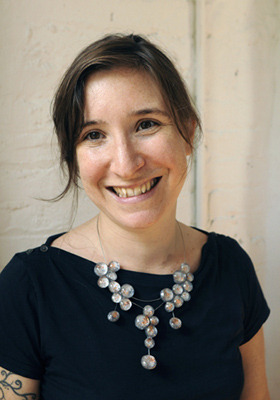
The Oldest Living Things in the World adds in dramatic manner a fascinating new perspective—literally, dinosaurs—of the living world around us
— Edward O. Wilson, Harvard University
Sussman’s ten-year investigation of the symbols of the earth’s ecology is rigorous and exploratory, realized with such generosity to the reader and her ambitions make an impossibly vast subject both felt and understood
— Charlotte Cotton, curator & author
With vision and dedicated persistence — think of a hip, female Shackelton — she has tracked down and brought these organisms to our awareness in lush photographs (taken with 6×7 film camera) and vivid text
— Adam Harrison Levy, Design Observer
Longevity means continuity. Long-lived people connect generations for us. Really long-lived organisms, like the ones Sussman has magnificently collected photographically, connect millennia. They put all of human history in living context. And as Sussman shows, they are everywhere on Earth.
This book embodies the Long Now and the Big Here.
– Stewart Brand, co-founder of Long Now
Rachel Sussman’s photographs and writing have been featured in The New York Times, Wall Street Journal, Guardian, and NPR’s Picture Show. She has spoken on the TED main stage and is a MacDowell Colony and NYFA Fellow, as well as a trained member of Al Gore’s Climate Reality Leadership Corps. Her work has been exhibited in museums and galleries in the US and Europe, and acquired for museum, university, corporate, and private collections.
Photos by Rachel Sussman from her book The Oldest Living Things in the World
Photo of Rachel Sussman by Laura Holder

May 29, 2014
Proof: The Science of Booze by Adam Rogers
The earliest evidence of a deliberately made alcoholic drink comes from a 10,000 year old piece of Chinese pottery. Lab tests revealed traces of a fermented mixture of rice honey and fruit. It would have been hard to mix those ingredients and keep it from fermenting.
Adam Rogers has held that shard of pottery in his hand and made an eminent archaeologist nervous in the process. He tells that story and many more in his new book Proof: The Science of Booze which tells the ten-millennia story of alcohol history from Yeast to Hangover.
Long Now was honored to host the launch of Proof this week for the first salon talk at The Interval, our new bar and cafe. We are not yet open to the public, but we knew this was the perfect way to debut The Interval as a venue for smaller talks to complement our ongoing Seminar series.
If you missed his talk here, Bay Area folks can see him speak tonight (Thursday, May 29) at California Academy of Sciences’ “Chemical Reactions” NightLife event. Adam will also be talking about Proof in a few cities around the country including June 4th in Washington DC, on June 5th in New York City, and in Los Angeles (TBA).
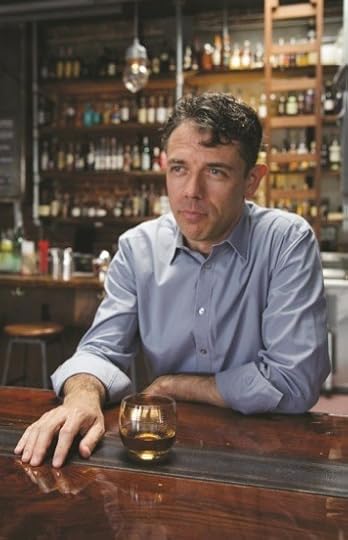
Photo of Adam Rogers by Celine Mikahala Grouard
An experienced science journalist and great storyteller, Adam is the articles editor at Wired, and he also knows his booze. In fact his knowledge of the local spirits and bar scene have been invaluable to Long Now as we planned and built The Interval.
It was Adam’s recommendation that led us to Jennifer Colliau who designed and runs The Interval’s bar. And Adam connected us with St George Spirits who helped us make some very special whiskey and gin which have helped us raise construction funds for The Interval.
You’ll find the full story of Long Now’s Bristlecone Gin in Proof, learn about an alternate reality where Americans drink saki rather than whiskey, and learn more science than you knew existed about hangovers. Adam first began this line of boozy writing in 02011 when he wrote an award-winning story about a whisky fungus.
Reception for the book so far has been very positive:
Adam Rogers writes masterfully and gracefully about all the sciences that swirl around spirits, from the biology of a hangover to the paleontology of microbes that transform plant juices into alcohol. A book to be savored and revisited.
— Carl Zimmer, author of A Planet of Viruses former Long Now speaker
Reading Proof feels just like you’re having a drink with a knowledgeable and enthusiastic friend. —Adam Savage, host of MythBusters
Congratulations to Adam and here’s to the continued success of Proof. It was wonderful to celebrate it and The Interval’s debut together.
The Interval at Long Now is an intimate event venue that serves coffee, tea, beer, wine, and sensational cocktails in a time-themed menu. The Interval opens for regular hours in June, and will host a few salon talks each month, more events will be announced soon.

Stewart Brand's Blog
- Stewart Brand's profile
- 291 followers












